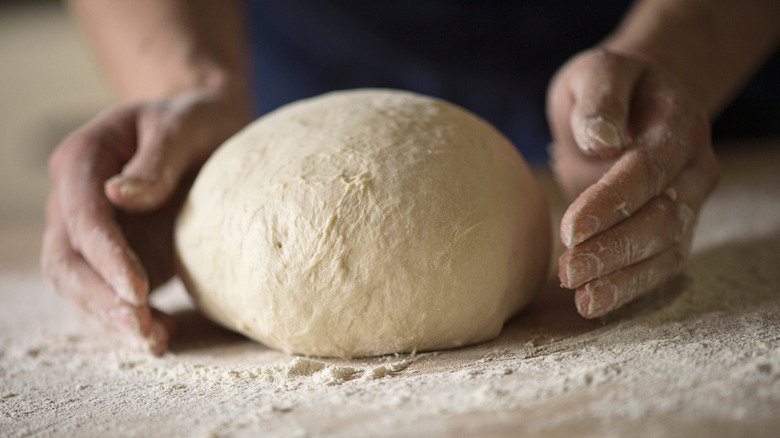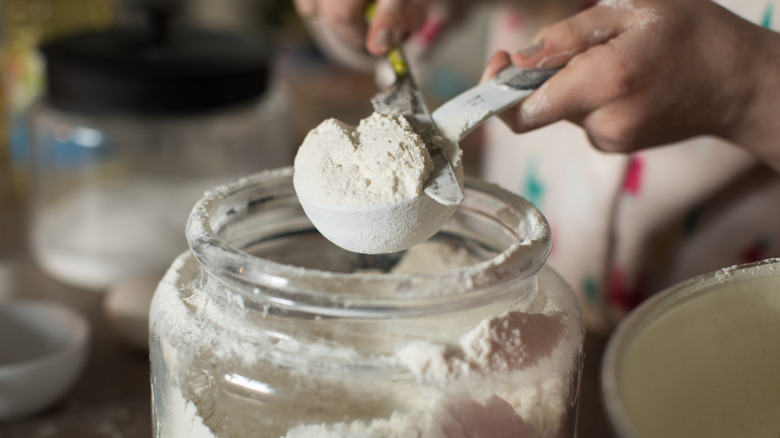How You Measure Flour Greatly Impacts Impacts Your Homemade Bread
While measuring with your heart is a great approach for certain ingredients — garlic, say — your baked goods need precision in order to be successful. Flour, in particular, is a key ingredient that can make or break your bread if not measured correctly. That's why using a kitchen scale to weigh your flour is the best method. Measuring cups are inconsistent and using them often leads to packing in more flour than needed. If you're scooping directly from the bag, chances are you're adding too much, which can result in a dry dough that's tough to work with. On the flip side, too little flour leaves you with wet dough that won't provide the necessary structure for a good rise.
To measure by weight, simply place your mixing bowl on the scale and zero it out. Then, slowly add your flour until you reach the exact amount your recipe calls for. Bread recipes are usually written with weight in grams, making it easier to get the precise amount needed for consistent results. Using a scale also eliminates the guesswork of sifting, spooning, or leveling your flour.
If you don't have a scale, there are alternative methods to measure accurately, but they come with a bit more variability. For now, trust that a scale will give you the best chance of creating perfectly structured dough, whether you're making quick breads, sandwich loaves, or artisanal sourdough.
Measuring without a scale
Using a scale is ideal, but what happens if you don't have one on hand? You're not forbidden from making bread; you'll just need to take a different approach. Before you begin, however, it's a good idea to make sure your flour is good to go. First, check that your flour isn't expired and ensure you're using the right type for your recipe, as bread flour and all-purpose flour yield different results. Following the recipe's specified flour type — and making sure it's not out of date — is the first step to the best outcome.
Then it's time to measure. Rather than scoop directly from the bag or canister, make sure the flour isn't compact. Start by fluffing it with a spoon to add air and loosen the flour. If the recipe calls for the flour to be sifted before measuring, you can skip this step. Next, gently spoon the flour into the measuring cup, being careful not to scoop with the cup itself, as that will pack too much in. Once you've filled the cup, use the back of a knife to level off the top. Never shake or tap the cup, as that will compact the flour and throw off your measurement. This method brings you much closer to the accurate amount your recipe requires.

